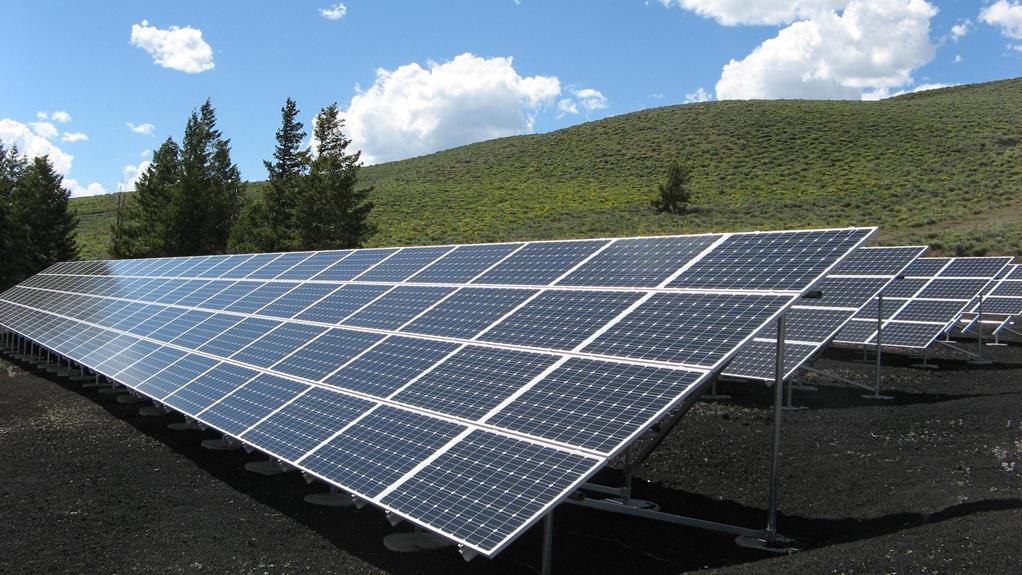With the global demand for energy on the rise, it becomes imperative to examine the various sources available.
Conventional sources like coal, oil, and electricity have long served as the backbone of energy production. However, non-conventional or renewable sources are gaining momentum due to concerns about environmental impact and resource depletion.
Solar energy, bioenergy, tidal energy, and wind energy are among the alternatives that offer sustainability and cleanliness.
This article explores both conventional and non-conventional sources, highlighting the significance of transitioning to more sustainable options.
Key Takeaways
- Conventional sources of energy in India include coal, oil, and electricity.
- Major sources of power generation in India include nuclear power, thermal power, and hydroelectric power.
- Non-commercial energy sources in India include straw, dried dung, and firewood.
- Non-conventional sources of energy, also known as renewable sources, include solar energy, bioenergy, tidal energy, and wind energy. They are environmentally friendly, inexhaustible, and offer a sustainable and cleaner alternative to conventional sources.
Importance of Conventional Energy Sources
Although non-conventional sources of energy are gaining importance, it is crucial to recognize the significance of conventional energy sources in meeting the current energy demands.
Conventional energy sources, such as coal, oil, and electricity, play a vital role in powering industries, homes, and transportation systems. One of the primary advantages of conventional energy sources is their cost effectiveness. Coal, for example, is abundant and relatively cheap to extract, making it a cost-effective option for power generation.
Additionally, conventional energy sources have a significant impact on the environment. The burning of fossil fuels, like coal and oil, releases harmful greenhouse gases into the atmosphere, contributing to climate change and air pollution.
Despite these drawbacks, conventional energy sources continue to be essential in meeting our energy needs, and efforts should be made to minimize their environmental impact through technological advancements and cleaner production methods.
Overview of Non-conventional Energy Sources
To understand the potential of non-conventional energy sources, it is important to examine their characteristics and applications in various sectors. Here is an overview of non-conventional energy sources:
- Challenges in implementing non-conventional energy sources:
One of the main challenges is the initial high cost of setting up infrastructure for renewable energy sources like solar panels and wind turbines. Additionally, integrating these sources into the existing power grid can be complex and requires careful planning.
- Economic viability of non-conventional energy sources:
While non-conventional energy sources have become more affordable over the years, they still face competition from conventional sources in terms of cost-effectiveness. However, with advancements in technology and government incentives, the economic viability of non-conventional energy sources is improving.
- Environmental benefits:
Non-conventional energy sources are environmentally friendly as they produce little to no greenhouse gas emissions. This helps in reducing air pollution and mitigating climate change.
- Diversification of energy mix:
Non-conventional energy sources provide an opportunity to diversify the energy mix and reduce dependence on fossil fuels. This can improve energy security and reduce the impact of price fluctuations in the global oil market.
Advantages of Solar Energy
Furthermore, solar energy offers numerous advantages that make it a highly desirable source of power.
One of the key advantages is its cost effectiveness. Solar power applications can help reduce electricity bills as it harnesses energy from the sun, which is abundant and free. By investing in solar panels, individuals and businesses can generate their own electricity and save money in the long run.
Additionally, solar energy is environmentally friendly and does not produce harmful greenhouse gas emissions. It is a clean and renewable source of energy that helps in reducing the carbon footprint and mitigating climate change.
Solar power can also be used in various applications such as heating water, powering homes and industries, and even charging electric vehicles.
Harnessing Wind Energy
Importantly, wind energy is a rapidly growing and promising source of renewable power. Here are four key points about harnessing wind energy using wind turbine technology for wind power generation:
- Wind turbines: These tall structures with large blades are used to capture the kinetic energy of the wind. The blades spin when the wind blows, converting the wind's energy into mechanical power.
- Power generation: As the blades rotate, they turn a generator, which produces electricity. This electricity can then be used to power homes, businesses, and even entire communities.
- Advantages: Wind energy is clean and does not produce harmful emissions or contribute to climate change. It is also abundant and inexhaustible, making it a sustainable source of power.
- Challenges: The main challenge in harnessing wind energy is the variability of wind patterns. Wind speeds can fluctuate, and the wind may not always blow consistently. However, advancements in wind turbine technology have made it possible to harness wind energy even in low wind areas.
Harnessing wind energy through wind turbine technology is a promising solution for meeting our energy needs while reducing our reliance on fossil fuels.
Exploring Tidal Energy Potential
In recent years, there has been growing interest in exploring the potential of tidal energy as a sustainable and renewable source of power. Tidal energy technology harnesses the power of tidal waves to generate electricity. It is a promising alternative to conventional energy sources due to its abundant availability and environmentally friendly nature.
However, there are challenges in the implementation of tidal energy. One major challenge is the high cost of developing and maintaining tidal energy infrastructure. Another challenge is the limited availability of suitable sites for tidal energy installations. Additionally, the unpredictable and variable nature of tidal waves makes it difficult to consistently generate power.
Despite these challenges, researchers and engineers are continuously working towards improving tidal energy technology and finding innovative solutions to overcome these obstacles.
Transitioning to a Sustainable Energy Future
As we move towards a sustainable energy future, the transition from conventional sources of energy to non-conventional and renewable sources becomes imperative. To ensure a smooth transition, the role of government is crucial. Here are the challenges that need to be addressed:
- Investment: The government needs to provide financial support and incentives to encourage the adoption of non-conventional sources of energy. This includes funding research and development, as well as offering subsidies for renewable energy projects.
- Infrastructure: A robust infrastructure is essential for the widespread use of renewable energy. The government must invest in the development of transmission and distribution systems that can handle the fluctuating nature of renewable energy sources.
- Public Awareness and Education: The government plays a vital role in raising public awareness about the benefits of renewable energy and encouraging its adoption. This can be done through campaigns and educational programs.
- Policy Framework: The government needs to develop a comprehensive policy framework that supports the growth of renewable energy. This includes setting clear targets, implementing regulations, and creating a favorable market environment for renewable energy technologies.

